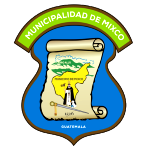

แทงบอลออนไลน์ เว็บแม่ UFABET สล็อตเว็บตรงถอนเงินได้จริง
แทงบอลออนไลน์ บอลสด ไลฟ์บอล ต้อง UFABET แหล่งรวมคอบอล คนรักเดิมพันกีฬา ชอบดูกีฬาแบบสดๆใหม่กว่าใคร ชมคัดไม่มีสะดุดตลอด 24 ชั่วโมง ด้วยรูปแบบการดูบอลสดแบบคมชัด สด ใหม่ ครบจบทุกแมทซ์ทุกเกมส์ ดูบอลสดไม่ดีเลย์ ทำให้คอบอลมีความสนุก ถึงใจครบเครื่องเรื่องกีฬา ไม่ว่าจะเดิมพันกีฬา สปอร์ตเบ็ท ดูบอลสดผ่านมือถือฟรี จึงเกิดเป็นกระแสนิยมทั่วโลก UFABET เว็บดูบอลออนไลน์ ที่ได้รับความนิยมอันดับต้นๆของไทย และยังได้รับความไว้วางใจจากผู้ชมคอบอลหลายๆท่านอีกด้วย ดูบอลสด บนมือถือ ส่งตรงถึงผู้ชมทุกคน
สล็อตเว็บตรง UFABET ค่ายเกมสล็อตยอดนิยมในวงการคาสิโนออนไลน์ ด้วยการนำเสนอเกมสล็อตที่มีคุณภาพสูง ภาพกราฟิกสวยงาม และ ฟีเจอร์สุดพิเศษที่ทำให้ผู้เล่นเพลิดเพลิน ทาง เข้า สล็อต 168 เว็บ ตรง เช่น สล็อตแนวผจญภัย PG SLOT สล็อตภาพสวย 3D โบนัสแตกหนัก ฟีเจอร์เพียบ ค่ายเกมสล็อตออนไลน์ชั้นนำที่ได้รับความนิยมสูงสุดในวงการคาสิโนออนไลน์ JOKER GAMING เจ้าพ่อสล็อตคลาสสิก โบนัสแตกไว JILI SLOT สล็อตมาแรง เบทต่ำ กำไรสูงระบบฝากถอนไว ระบบออโต้ เว็บแทงบอล เต็มรูปแบบ ยกระดับความมั่นใจในการแทงบอลออนไลน์ของคุณด้วยระบบฝากถอนเงินอัตโนมัติที่ได้รับการยอมรับว่ามีความปลอดภัยสูงสุด คุณสามารถดำเนินการธุรกรรมทางการเงิน ไม่ว่าจะเป็นการฝากหรือถอนเงิน ได้อย่างอิสระและรวดเร็วโดยไม่ต้องผ่านคนกลาง ระบบที่ออกแบบมาเพื่อรองรับการใช้งานที่ง่ายและมีประสิทธิภาพ ข้อดีของระบบฝากถอนออโต้ ความรวดเร็วในการฝากถอน การฝากเครดิตใช้เวลาเพียงไม่กี่วินาที ถอนเงินง่ายดายด้วยการเลือกจำนวนและยืนยัน ระบบอัตโนมัติที่ชาญฉลาด ใช้ AI ในการดำเนินการ ไม่ต้องรอการอนุมัติหรือแสดงสลิปแทงบอลออนไลน์ สนุกได้ทุกแมทซ์ เล่นได้ทุกลีก ครบจบในเว็บเดียว ยินดีต้อนรับสู่การ แทงบอลออนไลน์ ซึ่งเปิดรับการเดิมพันจากทั่วทุกมุมโลก เรามีตัวเลือกในการแทงบอลที่ครบครันสำหรับทุกการแข่งขัน ส่งตรงจากสนามในทุกแมตช์ ให้คุณสามารถเลือกแทงทีมโปรดได้ครบจบในที่เดียว โดยไม่ต้องสลับเว็บไซต์อีกต่อไป รูปแบบการแทงบอลออนไลน์ บอลเดี่ยว (Single Bet) บอลสเต็ป (Parlay Bet) แฮนดิแคป (Handicap) สูง/ต่ำ (Over/Under) แทงบอลครึ่งแรก/ครึ่งหลัง (Half-time/Full-time) ทายสกอร์ (Correct Score) แทงบอลคู่/คี่ (Odd/Even)
เว็บไซต์ แทงบอล ที่กำลังได้รับความนิยมสูงสุดในแวดวง แทงบอลออนไลน์ มอบโอกาสให้ทุกคนได้สัมผัสกับประสบการณ์การเดิมพันที่ยอดเยี่ยม คุณสามารถเริ่มเดิมพันตั้งแต่ 2 คู่ไปจนถึง 12 คู่ ด้วยการลงทุนขั้นต่ำเพียง 5 บาทเท่านั้น ระบบการฝากถอนเงินที่ไม่มีข้อจำกัด ทำให้การเริ่มต้นเพียง 10 บาทก็เพียงพอ และการทำธุรกรรมรวดเร็วเพียงไม่กี่วินาที เงินก็จะถูกเพิ่มเข้าสู่บัญชีทันที พร้อมให้คุณเดิมพันได้อย่างเต็มที่ทุกเวลาสล็อตเว็บตรง 100% ใช้ API แท้ จากต่างประเทศ เว็บสล็อต ของเรานำเข้า API แท้จากผู้ให้บริการต่างประเทศโดยตรง สล็อตเว็บตรง เว็บแท้ 100% รับประกันความปลอดภัยและความโปร่งใสในการเดิมพัน ระบบ API ฝากถอนรองรับทุกช่องทาง อำนวยความสะดวกให้ผู้เล่นทำธุรกรรมได้ง่ายและรวดเร็ว เราใช้ API แท้ ไม่มีการปรับแต่งอัตราชนะ เล่น สล็อต ได้จริง จ่ายเต็ม มั่นใจได้กับมาตรฐาน API ระดับสากลที่ได้รับการรับรองจากองค์กร คาสิโนออนไลน์ ชั้นนำข้อได้เปรียบเมื่อคุณเลือกเดิมพันกับเราที่นี่ ความสะดวกและรวดเร็ว ระบบออนไลน์ที่ใช้งานง่าย ช่วยให้คุณสามารถเดิมพันได้ทุกที่ทุกเวลาโดยไม่ต้องออกจากบ้าน อัตราต่อรองที่ยอดเยี่ยม เรามอบค่าน้ำที่ดีที่สุด ซึ่งเพิ่มโอกาสในการทำกำไรมากขึ้น ความปลอดภัย เว็บไซต์ของเรามีมาตรการรักษาความปลอดภัยที่เข้มงวด เพื่อปกป้องข้อมูลส่วนตัวและการทำธุรกรรมทางการเงินของคุณ ความหลากหลายของเกม มีเกมและตัวเลือกการเดิมพันให้เลือกมากมาย ทั้งแทงบอลเดี่ยว บอลเต็ง และสเต็ปทางเข้า แทงบอล ไม่มีขั้นต่ำ เล่นผ่านมือถือ ระบบเสถียร หากคุณหลงใหลในการแทงบอลกับเว็บชั้นนำ คุณไม่ควรพลาดโอกาสนี้ เพราะเราเป็นทางเข้าที่มีการอัปเดตใหม่ล่าสุด ให้คุณสามารถเข้าถึงได้จากทุกอุปกรณ์ ไม่ว่าจะเป็นคอมพิวเตอร์ แท็บเล็ต หรือสมาร์ทโฟนทั้งระบบ iOS และ Android เรามีระบบรักษาความปลอดภัย SSL ที่มั่นคงและการจัดการหลังบ้านโดยทีมโปรแกรมเมอร์ผู้เชี่ยวชาญสล็อตเว็บตรง ไม่ผ่านเอเย่นต์ เริ่มต้น 1 บาท มีทรูวอเลท ถอนได้ไม่อั้น แม้ว่าคุณจะมีทุนน้อย ก็ร่วมเล่น สล็อตเว็บตรง กับเราได้ เพราะ เว็บสล็อต ของเรา รองรับระบบ ทรูวอเลท ทำธุรกรรมทุกรายการได้ปลอดภัยรวดเร็ว ไม่มีขั้นต่ำ ฝาก-ถอน เริ่มต้น 1 บาท ก็เล่น สล็อตเว็บตรง ได้เลยทันที นอกจากนี้เรายังเพิ่มโอกาสในการทำไรจาก สล็อตเว็บตรง แบบไร้ขีดจำกัดเว็บไซต์ของเราขยายการบริการครอบคลุมทั่วทั้งภูมิภาคเอเชีย พร้อมมอบประสบการณ์การใช้งานที่รวดเร็วและมีคุณภาพสูงสุด แม้คุณจะมีทักษะเพียงเล็กน้อยในการใช้สมาร์ทโฟนหรืออินเทอร์เน็ต ก็สามารถสมัครสมาชิกและเริ่มต้นการแทงบอลออนไลน์ผ่านระบบที่มั่นคงและปลอดภัยที่สุด เราได้รับการรับรองมาตรฐานสากลในเรื่องความปลอดภัยและความน่าเชื่อถือ ทำให้เป็นสถานที่ที่รวมทุกการเดิมพันกีฬาที่คุณต้องการไว้ในที่เดียว
ข่าวกีฬา ข่าวบอล วอลเลย์บอล สดทุกชนิดกีฬา ที่สุดข่าวกีฬาวันนี้
เกมกีฬาในวันนี้
Belgrano – Barracas Central
Lanús – Instituto Córdoba
Pumas UNAM – Monterrey
Sporting San José – Herediano
Uprising FC – Doc's United FC
Hat Trick FC – Oakland SC Reserves
FC Juárez – Club América
Antigua GFC – Deportivo Mixco
Independiente Bogotá Aborigen – Embajadores Bogotá
Llaneros FC – Junior Barranquilla
Pachuca – Club Tijuana
AS Tiare Anani – AS Tiare Tahiti
Guangdong Meizhou Hakka – Changchun Dazhong Zhiye
Adelaide City – West Torrens Birkalla
Namdhari Football Club – Gokulam Kerala FC
Kingston City FC – North Sunshine Eagles SC
Klasa – Sporting Clube de Goa
Al-Quwa Al-Jawiya – Al Najaf
Al Talaba – Al-Shorta
Duhok FC – Al Mina'a
Zakho FC – Newroz SC
FC Bulleen Lions – Brunswick City SC
Adelaide City – West Torrens Birkalla
Hopa Spor Eğitim – Murgul Belediyespor
Adelaide Comets – Croydon Kings
Kovalam FC – Kerala Police
Metalist 1925 – SeaSters Odessa
Germany U17 – Kosovo U17
England U17 – Netherlands U17
CS Don Bosco – Blessing FC
FC Ararat II – Urartu II
Hungary U17 – Turkey U17
Poland U17 – Switzerland U17
FC Urartu Yerevan – FC Ararat-Armenia Yerevan
Labëria FC – Bylis Ballsh B
Kazakhstan U17 – Estonia U17
HNK Šibenik U19 – NK Kustošija U19
Tanzania – Congo Republic
Crewe Alexandra U21 – Sheffield Wednesday U21
Watford U21 – Swansea City U21
FK Mladost GAT – FK Mačva Šabac
FK Trayal Kruševac – GFK Dubočica Leskovac
FK Voždovac – Radnički Sremska Mitrovica
Bukavu Dawa – Etoile de Kivu
FK Dobrudzha Dobrich – FK Yantra Gabrovo
US Chaouia – MSP Batna
FK Velež Mostar U19 – Zvijezda 09 U19
Gazelle FC – Elect-Sport
Tourbillon FC – Emat
OFC Lokomotiv Gorna Oryahovitsa – PFC Botev Plovdiv II
Denmark U17 – Austria U17
Nzema Kotoko FC – New Edubiase United FC
Mes Shahr Babak – Shahr Raz Shiraz
VNK Zapruđe – VNK Slavonac
VNK Široki Brijeg – VNK Prečko stari-Ožujsko
VNK Trnje – VNK Horvati Mešić com
VNK Optimist – Dice - Veterani
Cro Docs - Veterani – Sesvetski Kraljevec - Veterani
NK Devetka - Veterani – Kašina - Veterani
NK Prigorje Markuševec - Veterani – NK Prigorje Žerjavinec - Veterani
Radnik Sesvete - Veterani – NK Čulinec - Veterani
Sava 2011 - Veterani – NK Concordia - Veterani
Članovi Veterani DInama – NK Studentski Grad - Veterani
VNK Kustošija – VNK Elektra
VNK Legende i točka – VNK Purger
VNK Podsused – VNK Lučko
Naft Gachsaran – Paykan
Niroye Zamini Tehran – Shahrdari Astara
Shahrdari Nowshahr – Saipa
Damash Gilan FC – Sanat Naft Abadan
Beasat Kermanshah FC – Palayesh Naft Bandar Abbas FC
GFK Sloboda Užice – FK Smederevo 1924
Circus FC – FC Zeta
Finland U17 – Sweden U17
AFC Vulturii Târgu Mureș – ACS Mureșul Luduș
FK Borac Banja Luka – NK Široki Brijeg
Hapoel Kfar Saba – MS Kfar Qasem
Hapoel Rishon Lezion – Hapoel Nof HaGalil
Maccabi Herzliya – Hapoel Acre
SC Freiburg – Eintracht Frankfurt
Arsenal Tula – Chayka Peschanokopskoye
FC Caesar – Zebras FC
NK Dilj Vinkovci - Veterani – HNK Vinkovci - Veterani
NK Nosteria Nuštar - Veterani – NK Croatia Bogdanovci - Veterani
NK Otok - Veterani – NK Hrvatski Sokol Mirkovci - Veterani
NK Slavonac Komletinci - Veterani – NK Slavonac Gradište - Veterani
NK Šokadija Babina Greda - Veterani – NK Frankopan Rokovci-Andrijaševci - Veterani

NK Šokadija Babina Greda - Veterani
2025-03-18 00:00
ยังไม่เริ่ม
NK Frankopan Rokovci-Andrijaševci - Veterani
Vukovarski Veterani – NK Hašk Sokol Stari Jankovci - Veterani
Northern Ireland U17 – Montenegro U17
FK Novi Pazar – FK Železničar Pančevo
HNK Međugorje – HNK Čapljina
Linköpings FC – Malmo FF
Rosengård – Växjö DFF
Al Wasl – Al-Jazira
Underdogs FC – Black Lotus FC
Sepsi OSK – FC Gloria Buzău
Atlético Cearense – Caucaia
Argentino de Quilmes – CS Dock Sud
Fénix – San Martin de Burzaco
Deportivo Español – Berazategui

สารบัญ
เว็บตรงแทงบอล ยูฟ่าเบท ระบบออโต้ เว็บบอล มาตรฐานสากล
ยูฟ่าเบท (UFABET) เว็บหลัก เว็บแม่ กำลังได้รับความนิยมมาแรงมากที่สุดในปี 2025 ด้วยสถานะ เว็บแทงบอลออนไลน์ อันดับ 1 ที่เป็นมาตรฐานระดับสากล เรารวบรวมมาไว้ให้แก่นักเดิมพันทุกท่านแล้วในวันนี้ ด้วยบริการ ฝาก-ถอนไม่มีขั้นต่ำ เริ่มต้นเพียง 5 บาท พร้อม ราคาน้ำดีที่สุด เช่น ค่าน้ำ 1.84 สูงกว่าเว็บอื่น 0.04 จุด การแทงบอลสูงสุด 2-12 คู่ ในยูฟ่าเบท เว็บแม่ ช่วยให้นักพนันสร้างรายได้แบบทวีคูณด้วยอัตราต่อรองแม่นยำ แทงบอลสเต็ปที่สามารถเดิมพันได้มากถึง 12 คู่ โดยใช้ ufabet ทางเข้า ผ่านมือถือได้ทุกอุปกรณ์ สำหรับเกมกีฬาที่มาแรงมากที่สุดในประเทศไทย เรามีระบบ แทงบอลสด แบบเรียลไทม์พร้อมสถิติอัปเดตทุก 10 วินาที เว็บบอลออนไลน์ UFABET ให้บริการความสนุกแบบครบวงจร ด้วยการรวม เกมกีฬาที่มาแรงมากที่สุดในประเทศไทย ไว้แบบครบครันในที่เดียวกับ ufabetเว็บตรง ไม่ว่าจะเป็น แทงบอลสด พร้อมสตรีมมิ่งภาพคมชัด Full HD สมัครufa วันนี้รับทันทีเครดิตฟรี 100% พร้อมรับโบนัสคาสิโนเพิ่ม 15% ข้อมูลส่วนตัวได้รับการปกป้องอย่างเต็มที่ นักพนันสามารถ เล่นได้ไม่อั้น ทุก 24 ชั่วโมงผ่านระบบ AI
ระบบแทงบอลสดอัปเดตข้อมูลแบบเรียลไทม์ทุก 0.5 วินาที พร้อมสถิติการแข่งขันและกราฟวิเคราะห์ช่วยตัดสินใจ เกมกีฬาที่มาแรงมากที่สุดในประเทศไทย อย่างมวยไทยและมวยสากลก็มีให้เลือกเดิมพันแบบไลฟ์สด ผ่านมาตรฐานระดับสากลสำหรับนักเดิมพันใหม่ สมัครตอนนี้รับทันทีเครดิตฟรี 100% ของยอดฝากแรกสูงสุด 5,000 บาท พิเศษสุดกับโปรโมชั่นแทงบอลสเต็ป รับโบนัสเพิ่ม 5% ทุกสัปดาห์เมื่อทำยอดเดิมพันครบ 10,000 บาท ระบบแนะนำการเดิมพันจากกูรูมืออาชีพช่วยเพิ่มโอกาสชนะรางวัลใหญ่ยูฟ่าเบท ทางเข้า ล่าสุดอัปเดตปี 2025 รองรับการเล่นได้ไม่อั้นผ่านทั้งคอมพิวเตอร์/สมาร์ทโฟน/แท็บเล็ต โดยไม่ลดประสิทธิภาพการทำงาน ฟีเจอร์พรีวิวเกมช่วยชมตัวอย่างการแข่งขันก่อนเริ่มแมตช์จริง พร้อมระบบแจ้งเตือนอัตโนมัติเมื่อมีการเปลี่ยนแปลงอัตราต่อรอง

แทงบอล ufabet (แทงบอลออนไลน์) รูปแบบการเดิมพันหลากหลาย
รูปแบบการเดิมพันหลากหลายของ ufabet ยังรวมถึงฟีเจอร์พิเศษเช่น การเดิมพันแบบครึ่งเวลา/เต็มเวลา การทายผลผู้ทำประตูแรก และการเดิมพันแบบผสมผสานระหว่างกีฬาประเภทต่างๆ นักพนันสามารถสร้างสรรค์กลยุทธ์การเดิมพันได้อย่างอิสระตามความชำนาญการแทงบอล ufabet (แทงบอลออนไลน์) เป็นรูปแบบการเดิมพันที่หลากหลายและตอบโจทย์นักพนันยุคใหม่ ด้วยบริการแทงบอลออนไลน์ครบวงจรผ่าน ufabet เว็บตรง ที่มาพร้อมระบบฝาก-ถอนอัตโนมัติแบบเรียลไทม์ รองรับการเดิมพันได้ทุกอุปกรณ์ทั้งคอมพิวเตอร์ สมาร์ทโฟน และแท็บเล็ต โดยไม่ต้องดาวน์โหลดแอปพลิเคชันรูปแบบการเดิมพันหลากหลายของ ufabet ครอบคลุมทุกความต้องการ ตั้งแต่การแทงบอลเดี่ยวแบบพื้นฐานไปจนถึงบอลสเต็ปสูงสุด 12 คู่ พร้อมอัตราค่าน้ำแข่งขันที่ให้ผลตอบแทนสูงกว่าเว็บทั่วไป ตัวอย่างเช่น การเดิมพันแบบแฮนดิแคปที่ช่วยปรับสมดุลการแข่งขันระหว่างทีมที่มีความแตกต่างด้านความแข็งแกร่งอย่างชัดเจน หรือการทายผลสกอร์แบบแม่นยำที่ให้อัตราจ่ายสูงเป็นพิเศษ
- แทงบอลเดี่ยว (Single Bet) - การเดิมพันผลการแข่งขันแบบทีมต่อทีม
- บอลสเต็ป (Parlay Bet) - รวมการเดิมพันหลายคู่ในตicketเดียว
- แฮนดิแคป (Handicap) - การปรับแต้มต่อเพื่อสร้างความเท่าเทียม
- สูง/ต่ำ (Over/Under) - การทายผลรวมประตูในแมตช์
- ทายสกอร์ (Correct Score) - การทำนายผลคะแนนแบบเจาะจง
- บอลสด (Live Betting) - การเดิมพันแบบเรียลไทม์ระหว่างแข่ง
ufabet ทางเข้า ที่ออกแบบมาอย่างทันสมัยรองรับการใช้งานผ่านมือถือทุกระบบ ทั้ง iOS และ Android ด้วยระบบรักษาความปลอดภัย SSL มาตรฐานสากล ช่วยป้องกันข้อมูลส่วนตัวและธุรกรรมทางการเงิน ผู้ใช้สามารถเดิมพันได้อย่างมั่นใจแม้ในเกมการแข่งขันสำคัญระดับโลกอย่างพรีเมียร์ลีกหรือฟุตบอลโลกบริการ แทงบอล ออนไลน์ของ ufabet โดดเด่นด้วยระบบเงินฝาก-ถอนอัตโนมัติที่เร็วที่สุดในวงการ เริ่มต้นฝากขั้นต่ำเพียง 20 บาท โดยไม่มีค่าธรรมเนียมและไม่จำกัดจำนวนครั้งต่อวัน ใช้เทคโนโลยี AI ในการประมวลผลธุรกรรมภายในไม่กี่วินาที รองรับช่องทางธนาคารหลักทุกแห่งในประเทศไทย มาแนะนำตัวอย่างการแทงบอลออนไลน์ยอดนิยมให้แก่นักเดิมพันกัน สำหรับมือใหม่แนะนำเริ่มจากบอลเดี่ยวก่อน โดยเลือกคู่แข่งขันจากลีกดังอย่างพรีเมียร์ลีกอังกฤษ วิเคราะห์รูปแบบทีมและสถิติล่าสุด จากนั้นกำหนดจำนวนเงินเดิมพันตามงบประมาณ เมื่อชนะเดิมพันจะได้รับเงินรางวัลทันทีเข้าบัญชี
ufabet เว็บตรง มอบประสบการณ์การเล่นแบบพรีเมียมด้วยคุณสมบัติเหล่านี้:
- ระบบแจ้งเตือนผลการแข่งขันและอัตราต่อรองล่าสุด
- แดชบอร์ดแสดงประวัติการเดิมพันแบบเรียลไทม์
- เครื่องมือคำนวณเงินรางวัลอัตโนมัติทุกประเภทการเดิมพัน
- แผนภูมิวิเคราะห์สถิติทีมและนักเตะแบบละเอียด
- บริการลูกค้าตลอด 24 ชั่วโมงผ่านช่องทางแชทสด โทรศัพท์ และอีเมล พร้อมทีมงานมืออาชีพที่ให้คำปรึกษาทุกขั้นตอนการเดิมพัน สำหรับสมาชิกใหม่มีโปรโมชั่นพิเศษทั้งเครดิตฟรีและโบนัสคืนยอดเสีย สร้างโอกาสทำกำไรได้แม้มีทุนน้อย
แทงบอลออนไลน์ UFABET เว็บแทงบอล ราคาน้ำบอลสูงกว่าเจ้าอื่น
แทงบอลออนไลน์ UFABET เว็บแทงบอล ที่ให้ราคาน้ำบอลสูงกว่าเจ้าอื่นอย่างชัดเจน ด้วยอัตราต่อรองที่ดีที่สุดในตลาด เราให้ค่าน้ำ 1.84 ในขณะที่เว็บอื่นให้เพียง 1.80 สำหรับการแข่งขันระดับเดียวกัน เช่น นัดระหว่างเรอัลมาดริดและบาร์เซโลนา การันตีว่าทุกการเดิมพันกับเราจะได้รับผลตอบแทนสูงสุด ราคาน้ำบอลสูงกว่าเจ้าอื่นนี้ทำให้สมาชิกสามารถทำกำไรได้มากกว่าถึง 10-20% เมื่อเทียบกับเว็บพนันทั่วไปเว็บแทงบอล UFABET โดดเด่นด้วยระบบราคาน้ำบอลสูงกว่าเจ้าอื่นในทุกการแข่งขัน ไม่ว่าจะเป็นพรีเมียร์ลีก ลาลีกา บุนเดสลีกา หรือแม้แต่ไทยลีก เรามีทีมงานนักวิเคราะห์มืออาชีพที่คำนวณอัตราต่อรองแบบให้ประโยชน์สูงสุดแก่ผู้เล่น ราคาน้ำบอลสูงกว่าเจ้าอื่นนี้เกิดจากการพัฒนาระบบอย่างต่อเนื่องโดยวิศวกรผู้เชี่ยวชาญ เพื่อให้สมาชิกได้รับประสบการณ์การเดิมพันที่เหนือระดับ
เว็บแทงบอลยูฟ่าเบท เว็บแทงบอลที่ดีที่สุด ราคาน้ำดีที่สุด เราให้ค่าน้ำในการแทงบอลที่สูงกว่าเจ้าอื่นเป็นอย่างมากเราไม่เพียงให้ค่าน้ำดี แต่ยังมีโปรโมชั่นเพิ่มมูลค่าการเดิมพัน เช่น โบนัส 5% สำหรับการแทงบอลสเต็ป 5 คู่ขึ้นไป ทำให้สมาชิกได้รับผลตอบแทนทวีคูณมากกว่าเว็บทั่วไปถึง 2 เท่าระบบฝาก-ถอนออโต้ของเรารองรับการเดิมพันราคาน้ำบอลสูงกว่าเจ้าอื่นได้อย่างเต็มประสิทธิภาพ คุณสามารถฝากเงินขั้นต่ำ 20 บาทและเริ่มแทงบอลได้ทันทีภายใน 30 วินาที พร้อมถอนเงินได้ไม่จำกัดจำนวนครั้งต่อวัน โดยไม่มีค่าธรรมเนียมใดๆ ทั้งสิ้น ความรวดเร็วนี้ช่วยให้คุณไม่พลาดโอกาสเดิมพันในราคาน้ำดีที่สุดแทงบอลออนไลน์กับ UFABET ที่รวมทุกความได้เปรียบไว้ในที่เดียว ทั้งราคาน้ำบอลสูงกว่าเจ้าอื่น บริการ 24 ชั่วโมง และเทคโนโลยีล้ำสมัย เว็บแทงบอลแห่งนี้พร้อมให้คุณเปรียบเทียบราคาน้ำบอลสูงกว่าเจ้าอื่นได้ด้วยตัวเองผ่านระบบ Live Odds Comparison ที่อัปเดตแบบเรียลไทม์ ดูสถิติการเปลี่ยนแปลงราคาน้ำทุก 10 วินาที พร้อมกราฟวิเคราะห์แนวโน้มการเดิมพัน ช่วยตัดสินใจวางเดิมพันได้แม่นยำยิ่งขึ้นสมัครวันนี้เพื่อสัมผัสประสบการณ์แทงบอลออนไลน์กับราคาน้ำบอลสูงกว่าเจ้าอื่นแบบไม่มีที่ติ เราให้คุณเปรียบเทียบราคากับเว็บคู่แข่งได้ก่อนเดิมพันจริง พร้อมบริการลูกค้าภาษาไทย 24 ชม. ที่พร้อมอธิบายรายละเอียดอัตราต่อรองทุกนัดทุกการคลิกเดิมพันกับเราคือโอกาสสร้างรายได้จากราคาน้ำบอลสูงกว่าเจ้าอื่น มาพิสูจน์ความแตกต่างด้วยตัวคุณเอง สมัครฟรีไม่เสียค่าใช้จ่าย เริ่มต้นได้ด้วยเงิน 10 บาท และรับเครดิตทดลองเล่นเพื่อสัมผัสความได้เปรียบของอัตราต่อรองแบบพรีเมียมแทงบอลออนไลน์วันนี้ที่ UFABET เว็บแทงบอลแห่งอนาคตที่การันตีราคาน้ำบอลสูงกว่าเจ้าอื่นในทุกการแข่งขัน ตรวจสอบได้ด้วยตาผ่านระบบเปรียบเทียบแบบ Side-by-Sode ก่อนวางเดิมพันจริง รับรองความโปร่งใสและความได้เปรียบที่วัดผลได้จริง
ประเภทการแทงบอล จาก UFA โดยตรงจาก UFABET
การแทงบอลออนไลน์ได้รับความนิยมอย่างแพร่หลายในทุกมุมโลก ไม่เว้นแม้แต่ในประเทศไทย เราได้กลายเป็นตัวเลือกยอดนิยมสำหรับผู้ที่ชื่นชอบการแทงบอล ด้วยความเรียบง่ายในการเล่นและความรวดเร็วในการทำกำไร ผู้เล่นสามารถเพลิดเพลินกับการวางเดิมพันและมั่นใจได้ว่าการถอนเงินเป็นไปอย่างราบรื่นและเชื่อถือได้ เว็บไซต์ของเราขยายการบริการครอบคลุมทั่วทั้งภูมิภาคเอเชีย พร้อมมอบประสบการณ์การใช้งานที่รวดเร็วและมีคุณภาพสูงสุดรูปแบบการแทงบอลในปัจจุบันมีความหลากหลายเพื่อตอบสนองความต้องการของนักเดิมพันที่หลากหลาย ได้แก่ บอลเดี่ยว (Single Bet) การวางเดิมพันในทีมที่คิดว่าจะชนะในการแข่งขันเพียงคู่เดียว บอลสเต็ป (Parlay Bet) การเดิมพันในหลายคู่พร้อมกัน โดยจะต้องทายผลถูกทุกคู่เพื่อรับรางวัล ซึ่งให้ผลตอบแทนสูงกว่าบอลเดี่ยว แฮนดิแคป (Handicap) การเดิมพันที่มีการต่อรองระหว่างทีมที่มีความแข็งแกร่งแตกต่างกัน เพื่อให้การแข่งขันมีความเท่าเทียมมากขึ้น สูง/ต่ำ (Over/Under) การทายผลรวมของคะแนนว่าจะสูงหรือต่ำกว่าค่าที่กำหนนอกจากนี้ยังมีรูปแบบการแทงบอลครึ่งแรก/ครึ่งหลัง (Half-time/Full-time) การเดิมพันผลการแข่งขันในครึ่งแรกหรือเต็มเวลา ทายสกอร์ (Correct Score) การทายผลสกอร์ที่แน่นอนของการแข่งขัน และแทงบอลคู่/คี่ (Odd/Even) การเดิมพันว่าผลรวมของคะแนนจะออกมาเป็นเลขคู่หรือเลขคี่ อัตราการจ่ายเงินรางวัลในการแทงบอลจะแตกต่างกันไปตามประเภทการเดิมพันและความเสี่ยงที่เกี่ยวข้องด
- แทงบอลเต็งหรือบอลเดี่ยว
- แทงบอลชุดหรือบอลสเต็ป
- แทงบอลแบบสูง-ต่ำ
- แทงบอลแบบแฮนดิแคป
- แทงบอลครึ่งแรกและครึ่งหลัง
- แทงบอลแบบ 1X2
- แทงบอลแบบทายผลสกอร์
- แทงบอลแบบคู่-คี่
- แทงบอลสด
การแทงบอลแบบแฮนดิแคป อัตราการจ่ายขึ้นอยู่กับการต่อรองที่กำหนดไว้ โดยค่าน้ำจะสะท้อนถึงความน่าจะเป็นของผลลัพธ์ ส่วนการแทงสูง/ต่ำ ค่าน้ำจะกำหนดอัตราการจ่ายเงิน หากทายถูกจะได้รับตามค่าน้ำที่ระบุ การทายสกอร์มีอัตราการจ่ายสูงเพราะโอกาสทายถูกยากกว่า โดยค่าน้ำจะสูงขึ้นตามความยากของการทายผลUFABET เว็บดูบอลออนไลน์ ที่ได้รับความนิยมอันดับต้นๆของไทย และยังได้รับความไว้วางใจจากผู้ชมคอบอลหลายๆท่านอีกด้วย ดูบอลสด บนมือถือ ส่งตรงถึงผู้ชมทุกคน ด้วยระบบการฝากถอนเงินที่ไม่มีข้อจำกัด ทำให้การเริ่มต้นเพียง 10 บาทก็เพียงพอ และการทำธุรกรรมรวดเร็วเพียงไม่กี่วินาที เงินก็จะถูกเพิ่มเข้าสู่บัญชีทันที
แทงบอลออนไลน์ UFABET เว็บใหญ่ ต่อยอดกำไรได้จริง พร้อมความมั่นคงในระดับสูง
การแทงบอลออนไลน์ UFABET บนเว็บใหญ่ระดับต้นของไทยที่ให้บริการมาอย่างยาวนาน ได้รับความไว้วางใจจากผู้ใช้งานจริงทั่วประเทศ ด้วยระบบการเงินที่มั่นคงและเทคโนโลยีล้ำสมัยช่วยให้ต่อยอดกำไรได้จริง พร้อมความมั่นคงในระดับสูง เว็บไซต์ของเรามีการอัปเดตระบบฝาก-ถอนอัตโนมัติที่เสถียรที่สุดในปัจจุบัน ใช้เวลาเพียงไม่กี่วินาทีเท่านั้น เริ่มต้นเดิมพันขั้นต่ำเพียง 5 บาท รองรับการทำธุรกรรมผ่านทุกช่องทางธนาคารแบบไม่มีขั้นต่ำรูปแบบการแทงบอลออนไลน์ใน UFABET มีให้เลือกมากมายทั้งบอลเดี่ยว บอลสเต็ป 2-12 คู่ แฮนดิแคป สูง/ต่ำ โดยมีอัตราค่าน้ำดีที่สุดในท้องตลาด การแทงบอลสดแบบเรียลไทม์ช่วยเพิ่มโอกาสทำกำไรได้ทุกนาทีของการแข่งขัน พร้อมระบบวิเคราะห์ผลบอลจากกูรูมืออาชีพที่แม่นยำสูงสุด ข้อมูลสถิติอัปเดตแบบเรียลไทม์ช่วยให้ตัดสินใจเดิมพันได้ถูกต้องระบบความปลอดภัยระดับมาตรฐานสากลด้วยเทคโนโลยี SSL Encryption ปกป้องข้อมูลส่วนตัวและธุรกรรมทางการเงินอย่างเต็มรูปแบบ การันตีความน่าเชื่อถือด้วยจำนวนผู้ใช้งานจริงเกิน 100,000 บัญชี ทุกการเดิมพันได้รับการรับรองผลลัพธ์แบบยุติธรรม 100% ไม่มีการปรับเปลี่ยนอัตราต่อกลางคันมาตรฐานการให้บริการระดับพรีเมียมด้วยอัตราความพึงพอใจผู้ใช้ 98.7% จากแบบสำรวจล่าสุด มั่นใจได้ในทุกการลงทุนกับเว็บแทงบอลออนไลน์ที่ใหญ่ที่สุดและมั่นคงที่สุดในเอเชีย
ทางเข้า UFABET สมัครแทงบอล วิธีการเล่น ยูฟ่าเบท ผ่านมือถือ
UFABET เว็บดูบอลออนไลน์ ที่ได้รับความนิยมอันดับต้นๆของไทย ดูบอลสด บนมือถือ ส่งตรงถึงผู้ชมทุกคน ทางเข้า UFABET เข้าสู่ระบบผ่านอุปกรณ์ได้หลากหลายทั้งคอมพิวเตอร์, สมาร์ตโฟน, แท็ปเล็ต โดยเฉพาะการ ดูบอลสดผ่านมือถือฟรี ที่สะดวกสบายคมชัดทุกแมทซ์ สำหรับคอบอลที่ต้องการ สมัครแทงบอล ออนไลน์สามารถเริ่มต้นได้ด้วยขั้นตอนง่ายๆวิธีการเล่น ยูฟ่าเบท ผ่านมือถือ เริ่มจากเข้าสู่ระบบผ่านทางเข้าเล่น UFABET ที่รองรับทั้ง iOS และ Android ระบบออกแบบมาเพื่อใช้งานบนมือถือได้อย่างเต็มประสิทธิภาพ
- ขั้นตอนการสมัครสมาชิก: เข้าสู่หน้าเว็บไซต์หลัก > คลิกปุ่มสมัครสมาชิก > กรอกข้อมูลส่วนตัว > ตั้งชื่อผู้ใช้/รหัสผ่าน > ยืนยันตัวตนผ่าน SMS หรืออีเมล > ผูกบัญชีธนาคาร
- ระบบฝาก-ถอนอัตโนมัติ: ฝากขั้นต่ำ 20 บาท ใช้เวลาไม่กี่วินาที ถอนเงินได้ไม่จำกัดจำนวนต่อวันผ่านโมบายแบงกิ้ง รองรับทุกธนาคาร
- รูปแบบการแทงบอล: บอลเดี่ยว/สเต็ป/สูง-ต่ำ/แฮนดิแคป/ทายสกอร์ เริ่มเดิมพันตั้งแต่ 10 บาท พร้อมอัตราค่าน้ำดีที่สุด
- เว็บไซต์ใช้เทคโนโลยี SSL และระบบ AI ในการรักษาความปลอดภัยข้อมูล รับรองความน่าเชื่อถือด้วยมาตรฐานสากล มีทีมงานบริการลูกค้าตลอด 24 ชั่วโมงผ่านแชทสด โทรศัพท์ และอีเมล สำหรับผู้เริ่มต้นสามารถทดลองแทงบอล 10 บาท เพื่อศึกษากลยุทธ์การเดิมพัน
ข้อได้เปรียบหลักเมื่อเล่นผ่านมือถือคือความรวดเร็วและความคล่องตัว สามารถรับชมบอลสดพร้อมเดิมพันไปด้วยกันได้ในเวลาเดียวกัน ระบบออโต้ช่วยให้จัดการเงินได้ง่าย แม้มีทักษะการใช้สมาร์ทโฟนพื้นฐานก็เริ่มต้นได้ทันทีUFABET ยังมีโปรโมชั่นพิเศษสำหรับสมาชิกใหม่ เช่น เครดิตฟรีและโบนัสต้อนรับ สำหรับนักเดิมพันมืออาชีพ เว็บนี้มอบประสบการณ์การเล่นระดับพรีเมียมด้วยฟีเจอร์พิเศษ เช่น การเดิมพันสดแบบเรียลไทม์ สถิติการแข่งขันอัปเดตล่าสุด และทีเด็ดบอลจากกูรูมืออาชีพ สามารถสร้างรายได้หลักแสนจากเงินทุนเริ่มต้นเพียงเล็กน้อยปัจจุบันมีผู้ใช้งานมากกว่า 329,875+ คนทั่วประเทศ มั่นใจได้ในความมั่นคงทางการเงินด้วยทุนหมุนเวียนสูง พร้อมจ่ายเงินรางวัลไม่จำกัดจำนวน ระบบฝากถอนออโต้ทำงานได้เสถียรแม้มีผู้ใช้งานพร้อมกันสูงสุด 500,000+ คน
เว็บพนันบอลศูนย์รวมโปรโมชั่นที่ยกระดับความคุ้มค่าให้แก่นักเดิมพันมากยิ่งขึ้น
ศูนย์รวมโปรโมชั่นที่ยกระดับความคุ้มค่าให้แก่นักเดิมพันมากยิ่งขึ้นจาก UFABET มอบประสบการณ์พิเศษด้วยข้อเสนอที่ครบวงจรสำหรับนักพนันทุกประเภท เริ่มตั้งแต่การสมัครสมาชิกครั้งแรกที่รับเครดิตฟรีและโบนัสต้อนรับมากมาย จนถึงโปรโมชั่นรายสัปดาห์ที่เพิ่มโอกาสทำกำไรได้แบบไม่จำกัด
- ระบบฝาก-ถอนอัตโนมัติที่เร็วที่สุดในไทย รองรับการทำธุรกรรมได้ไม่จำกัดจำนวนครั้งต่อวัน
- ค่าธรรมเนียมการถอนเงิน 0% ทุกยอดการเดิมพัน ไม่มีเงื่อนไขแอบแฝงรับคอมมิชชั่นคืนสูงสุด 0.7% จากทุกยอดเดิมพันแบบเรียลไทม์
- โปรโมชั่นพิเศษสำหรับสมาชิกใหม่ ฝากครั้งแรกรับโบนัส 100% สูงสุด 5,000 บาท
- แจกเครดิตฟรีรายสัปดาห์สำหรับนักเดิมพันที่มียอดเล่นต่อเนื่อง
- ศูนย์รวมโปรโมชั่นที่ยกระดับความคุ้มค่าให้แก่นักเดิมพันมากยิ่งขึ้นด้วยข้อได้เปรียบเฉพาะตัวจากเว็บตรง ไม่ผ่านเอเย่นต์ นักพนันจะได้รับอัตราค่าน้ำดีที่สุดในตลาด เริ่มเดิมพันขั้นต่ำเพียง 5-10 บาท แต่ได้ผลตอบแทนสูงกว่าทุกที่ ด้วยระบบคำนวณอัตราจ่ายแบบทวีคูณในบอลสเต็ป 12 คู่
สมาชิกทุกคนจะได้รับสิทธิพิเศษจากศูนย์รวมโปรโมชั่นที่ยกระดับความคุ้มค่าให้แก่นักเดิมพันมากยิ่งขึ้นอย่างต่อเนื่อง ทั้งโบนัสเงินฝากรายวัน โปรโมชั่นแจกเฟรชชิปสำหรับการเดิมพันสด และรางวัลพิเศษสำหรับการทายผลเสมอติดต่อกัน 9 นัด ที่มอบเงินรางวัลสูงสุดถึงหลักล้าน
เหตุผลที่ท่านต้องเลือกเดิมพันกับเราที่นี่แทงบอล UFABET
เหตุผลที่ท่านต้องเลือกเดิมพันกับเราที่นี่แทงบอล UFABET เริ่มจากความสะดวกสบายในการดูบอลสดผ่านมือถือได้ทุกอุปกรณ์ทั้ง iOS และ Android พร้อมระบบถ่ายทอดสดคมชัดระดับ 24 ชั่วโมง ครอบคลุมทุกแมทซ์ทุกลีกดังทั้งพรีเมียร์ลีก ลาลีกา บุนเดสลีกา และฟุตบอลโลกระบบการเงินของเราให้ความรวดเร็วและปลอดภัยที่สุดด้วยเทคโนโลยีฝาก-ถอนออโต้แบบเรียลไทม์
- ฝากเงินขั้นต่ำเพียง 5-10 บาท เริ่มเดิมพันได้ทันทีภายในไม่กี่วินาที
- ถอนเงินได้ไม่จำกัดจำนวนครั้งต่อวัน ไม่มีค่าธรรมเนียม
- รองรับทุกช่องทางธนาคารและโมบายแบงกิ้ง
- ใช้ AI ตรวจสอบธุรกรรมอัตโนมัติ ไม่ต้องรอการอนุมัติ
- บริการลูกค้าคุณภาพระดับพรีเมียมพร้อมทีมงานมืออาชีพ
- ให้คำปรึกษาตลอด 24 ชั่วโมงผ่านแชทสดและโทรศัพท์
- แก้ไขปัญหาเทคนิคได้ทันทีไม่เกิน 3 นาที
- มีระบบแนะนำเทคนิคการแทงบอลจากกูรูผู้เชี่ยวชาญ
- อัปเดตข้อมูลผลบอลสดและสถิติการแข่งขันแบบเรียลไทม์
- ข้อได้เปรียบด้านอัตราต่อรองและโปรโมชั่น
- ค่าน้ำดีที่สุดในตลาด สูงกว่าเว็บทั่วไป 0.04-0.10 จุด
- รับคอมมิชชั่นคืนสูงสุด 0.7% ทุกยอดเดิมพัน
- โปรโมชั่นสมาชิกใหม่รับเครดิตฟรี 100%
- แจกทีเด็ดบอลแม่นยำจากนักวิเคราะห์มืออาชีพ
- มีระบบสะสมแต้มแลกของรางวัลพิเศษ
- เทคโนโลยีล้ำสมัยรองรับการใช้งานทุกแพลตฟอร์ม
- ออกแบบอินเตอร์เฟซใช้งานง่ายทั้งบนมือถือและคอมพิวเตอร์
- ความหลากหลายของรูปแบบการเดิมพัน
- แทงบอลเดี่ยว/สเต็ปได้สูงสุด 12 คู่
- มีตลาดเดิมพันครบวงจรทั้งแฮนดิแคป สูง/ต่ำ คู่/คี่
- เดิมพันสดระหว่างเกมได้ทันที
- ทายผลแบบ Exact Score ได้อัตราจ่ายสูง
- รองรับการเดิมพันกีฬาชนิดอื่นกว่า 20 ประเภท
- UFABET ได้รับการยอมรับจากผู้ใช้งานจริงกว่า 1 ล้านบัญชี มีฐานลูกค้าทั่วประเทศที่ไว้วางใจมากว่า 10 ปี ระบบการเงินมั่นคงด้วยเงินสำรองกว่า 1,000 ล้านบาท พร้อมใบรับรองมาตรฐานสากลจาก GLI และ eCOGRA
ด้วยสัดส่วนการจ่ายเงินรางวัลสูงสุด 97.8% เมื่อเทียบกับเว็บอื่นในตลาด ทำให้สมาชิกกว่า 85% ได้รับประสบการณ์การชนะเดิมพันครั้งแรกภายใน 7 วัน ระบบแนะนำการเดิมพันอัจฉริยะช่วยเพิ่มโอกาสทำกำไรได้จริง 30-50%
เว็บแทงบอลออนไลน์อันดับ 1 UFABET ใช้บริการกับเราไม่มีคำว่าผิดหวังอย่างแน่นอน
เว็บแทงบอลออนไลน์อันดับ 1 อย่าง UFABET ให้บริการครบวงจรทั้งการดูบอลสดและเดิมพันกีฬาแบบสดๆ ด้วยระบบถ่ายทอดสดคมชัดระดับ Full HD ไร้กระตุกตลอด 24 ชั่วโมง รองรับการรับชมผ่านทุกอุปกรณ์ทั้งคอมพิวเตอร์ สมาร์ทโฟน แท็บเล็ต ครบทุกแพลตฟอร์ม Windows, MacOS, iOS, Android และ TV คอบอลสามารถสนุกกับทุกลีกดังเช่นพรีเมียร์ลีก ลาลีกา บุนเดสลีกา ยูโรปาคอนเฟอเรนซ์ลีก ฟุตบอลโลก รวมถึงไทยลีกได้แบบครบจบในที่เดียวใช้บริการกับเราไม่มีคำว่าผิดหวังอย่างแน่นอน เพราะเราคือเว็บตรงไม่ผ่านเอเย่นต์ที่มีฐานผู้ใช้งานหลักล้านทั่วประเทศ ให้คุณเดิมพันบอลเดี่ยวได้สูงสุด 12 คู่ในบิลเดียว พร้อมโปรโมชั่นแจกเครดิตฟรีและคืนค่าคอมมิชชั่นสูงสุด 0.7% ทุกยอดเดิมพัน ระบบเดิมพันสดแบบ Real Time อัปเดตสถิติการแข่งขันแบบเรียลไทม์ พร้อมฟีเจอร์ Cash Out ควบคุมการลงทุนได้เองสำหรับคอบอลตัวจริง UFABET มีบริการดูบอลสดฟรีทุกคู่ทุกลีก ภาพคมชัดระดับ เว็บแทงบอลออนไลน์อันดับ 1 อย่างเรายังโดดเด่นด้วยระบบ Security แบบ Military Grade ป้องกันการแฮกข้อมูล
UFABET ใช้เทคโนโลยี AI ล้ำสมัยในการปรับปรุงประสบการณ์ผู้ใช้อย่างต่อเนื่อง อัพเดทระบบล่าสุดปี 2025 ด้วยฟังกชัน Auto Bet ที่ช่วยคำนวณโอกาสชนะเดิมพันแบบอัตโนมัติ พร้อมแดชบอร์ดแสดงสถิติการเล่นแบบ Customizable ที่ปรับแต่งได้ตามสไตล์การเดิมพันส่วนตัวสำหรับนักเดิมพันมือใหม่ เรามีระบบแนะนำการเดิมพันอัตโนมัติตามรูปแบบการเล่น พร้อมวิดีโอสอนใช้งานกว่า 200 คลิป ฟรีเครดิตทดลองเล่น 500 บาท เมื่อสมัครสมาชิกใหม่ และโปรแกรมสะสมแต้มแลกของรางวัลพิเศษกว่า 1,000 รายการเว็บแทงบอลออนไลน์อันดับ 1 แห่งนี้ยังเป็นผู้นำด้านนวัตกรรม ด้วยการเปิดตัวฟีเจอร์ Live Betting 2.0 ที่ให้เดิมพันระหว่างแข่งได้ทุก 30 วินาที พร้อมระบบ Virtual Reality ที่ให้สัมผัสประสบการณ์ดูบอลเสมือนอยู่ในสนามจริง 100%สำหรับนักเดิมพันที่ชอบความท้าทาย เราจัดทัวร์นาเมนต์พิเศษทุกสัปดาห์เช่น Premier League Prediction Challenge ที่ให้ลุ้นรับรางวัล Mercedes-AMG พร้อมเงินรางวัลรวมกว่า 10 ล้านบาทต่อเดือน UFABET ยังคงพัฒนาอย่างไม่หยุดยั้ง ด้วยแผนเปิดตัวฟีเจอร์ AI Predictor ที่ใช้ Machine Learning วิเคราะห์ผลการแข่งขันแม่นยำถึง 82.7% ในปี 2025 พร้อมขยายบริการครอบคลุม 50 ประเทศทั่วโลก


































































































































Superliga
BETTING >